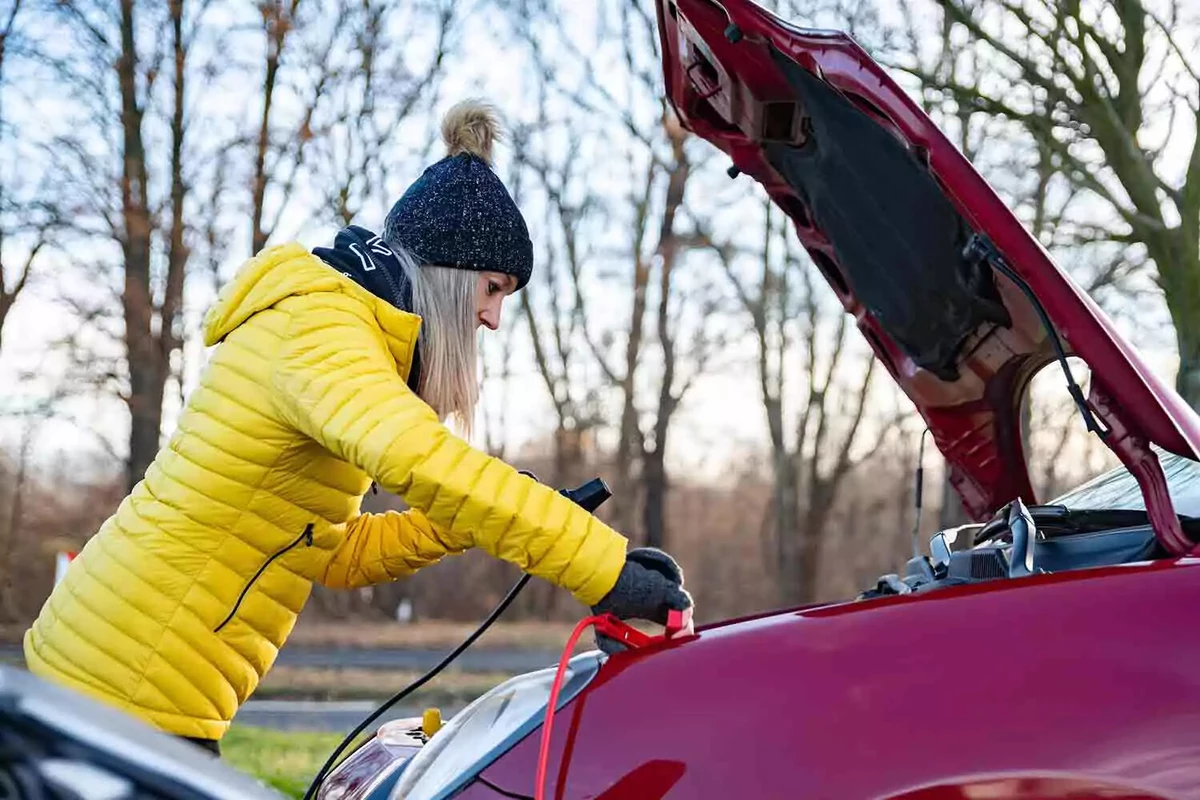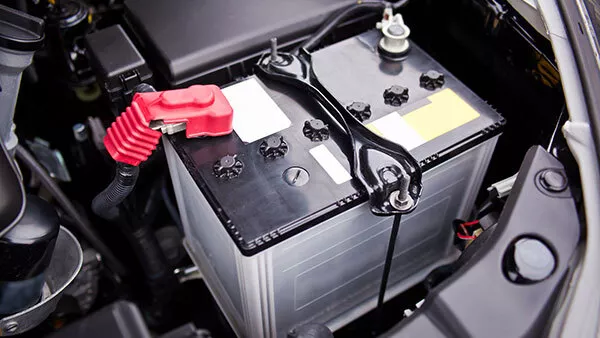
Cold weather can be tough on older batteries.
If you press the start button or turn the key but get nothing but a click and dim dash lights, then your car battery might be out of juice. Jumper cables and jump starters can give your tired battery the boost it needs to start the engine and get you back on the road.
In this guide, we explain what you need to know about jump-starting your vehicle and when it makes sense to keep a jump box on hand.
How a Car Battery Jump Starter Works
Your car battery needs a jump start when it doesn't have enough power to turn the starter motor and start the engine. Jumper cables restore that power by connecting your dead battery to a working battery in another vehicle. Or consider using a jump box, which does not require another vehicle.
Jump boxes and portable jump starters have built-in rechargeable batteries, cables, and clamps. Both give your car battery a power boost to start your engine.
Your car battery has two posts and two terminals that connect the car to the battery. The positive post has a plus symbol (+) and a red terminal cover and cable. The negative post is marked with a minus symbol (-) and a black terminal cable. First, check the posts and terminals for corrosion and looseness. Give each terminal a downward push and twist, and try to start the engine. If that doesn't work, it's time for a jump start.
Jumper Cables vs. Jump Starters

Whether you choose to keep a set of jumper cables in the trunk or a battery-powered jumper device in the glovebox, it’s best to be prepared.
We strongly recommend keeping a set of jumper cables in your trunk. You might not need them for months or years, but you might encounter another driver who does.
Jumper cables require another vehicle parked close enough to connect the positive and negative posts of both batteries. First, connect one red clamp to the positive post of the dead battery, and then connect the other red clamp to the positive post of the good battery. Next, connect one black clamp to the negative post on the good battery, then connect the other black clamp to the negative post on the dead battery. Let the engine in the car with the good battery run for a minute or so, and then start the engine in the other car.
After the dead vehicle is revived, keep it running and driving for at least 15 to 30 minutes. This gives your alternator a chance to recharge the battery more fully.
Jump boxes and portable jump starters follow the same principles, but they have a huge advantage: They have an internal battery and don't require another vehicle. To avoid sparks, connect the positive clamp to the positive post on the dead battery first. Then, connect the negative clamp to the negative post. Give the jump starter some time to transfer power to the tired or dead battery before trying to start the engine.
Some portable jump starters have a turbo or boost function to speed up the process. Portability and readiness give jump starters an advantage over jumper cables. If you have an old or modified vehicle that regularly needs a jump, it’s a great investment to keep a jump box in your trunk. Modern ones are small and inexpensive.
How long do jumper cables and jump boxes last?
Barring unforeseen damage, short circuit connections, or corrosion, a properly stored, high-quality set of jumper cables has no expiration date.
Battery box jump starters with lead-acid or AGM cells require periodic charging for long service life. But we recommend a portable lithium-ion battery or lithium iron phosphate jump starters with an internal battery management system. Jump boxes with this tech require less frequent charging and should last as long as the cells inside. This can be several years. It’s a good idea to turn it on and check the battery every few months.
Jump Starter Prices

A quality jump starter kit is an investment in peace of mind.
Expect to spend $20 to $50 for a set of jumper cables that lasts. Meanwhile, jumper boxes and portable jump starter prices vary by battery type and capacity, engine starting requirements, and additional features.
Low-capacity portable jump starters cost as little as $20, but higher-quality ones can run closer to $80. These sometimes come with some built-in attachments like an air compressor, as well as USB ports and a flashlight. Heavy-duty jumper boxes for diesel truck engines start at around $200.
Subscription membership roadside service prices vary, usually from around $65 to $130 per year, and a non-member jump start can be even more expensive. Therefore, a portable jump starter can save you money and time.
Signs of a Dead or Dying Car Battery

Multimeters start at under $100.
After a jump start gets you back home, it's time to check your car battery condition and find out why it ran low on juice. Dim headlamps, a starter that’s slow to crank over, and dash lights that get brighter when you rev the engine point to battery or charging system problems. Start with battery maintenance before suspecting the alternator.
Most of today's sealed lead-acid automobile battery cells are maintenance-free and don't require adding water. However, if your battery has removable caps, then pop them off and check the electrolyte level. Add distilled water as needed. During charging, all lead-acid batteries vent gasses that cause corrosion on the posts and terminals. Cleaning your battery terminals - opens in new window or tab. can restore peak starting and charging power.
It’s easy to test your charging system to determine if the problem is your battery or alternator. Check your battery voltage - opens in new window or tab. and connect an automotive battery charger to top off the cells if necessary. Find out how to tell the difference between a bad car battery and a faulty alternator - opens in new window or tab. with our helpful guide, and solve the mystery of what causes a battery to drain overnight and how to fix it - opens in new window or tab..
If test results point to a bad battery, then learn more about how to tell when it is time to replace a car battery - opens in new window or tab.. Get up to speed on the latest technology and best new batteries with our car and truck battery buying guide - opens in new window or tab.. Break out the tools and install a brand-new battery yourself - opens in new window or tab. with our step-by-step video guide.
If the battery holds a charge and passes the load test, then investigate signs that your alternator is failing - opens in new window or tab.. Read our alternator buying guide - opens in new window or tab. to get the best replacement alternator, new wiring harnesses, cables, and connectors for your car or truck. Learn how to remove and replace an alternator yourself - opens in new window or tab. with our step-by-step video guide.
When to Try a Push or Bump Start
A push start won't work if your car has an automatic transmission. However, it might work if you drive a vehicle with a manual transmission.
Disengage the parking brake, shift into neutral, and turn the ignition on. Ask a passenger or bystander to push the vehicle up to speed. Shift into gear and pop the clutch to start the engine. Pushing the car yourself and hopping into the seat to pop the clutch is a literal “jump start.”
Double-check that your battery terminals are clean and that nothing else is amiss in your vehicle that’s preventing it from starting. It’s not fun to get help pushing your vehicle only to pop the clutch and have nothing happen.
Share your feedback
This article is meant to provide general guidance only. Automotive maintenance, repair, upgrade, and installation may depend on vehicle-specifics such as make and model. Always consult your owner's manual, repair guide for specific information for your particular vehicle and consider a licensed auto-care professional's help as well, particularly for advance repairs.


















